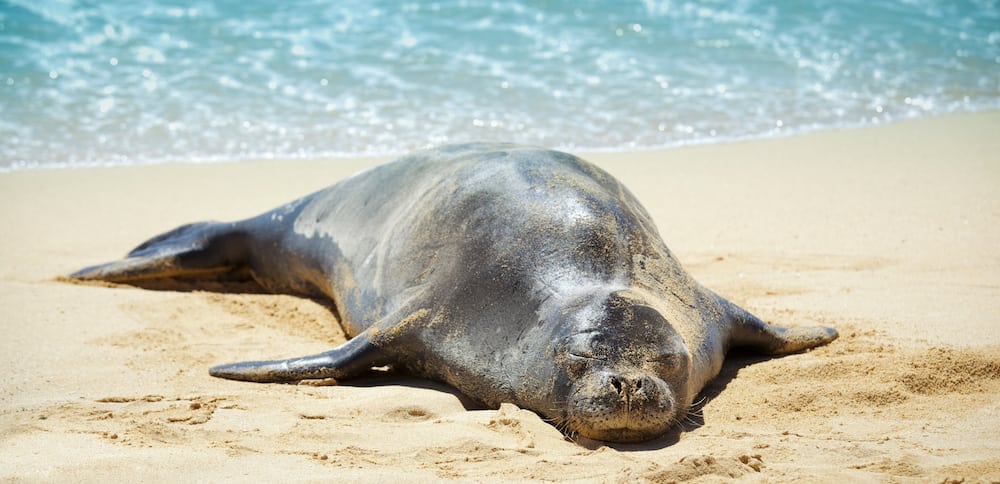We love our monk seals. But if you're lucky enough to see one, remember to keep your distance. They are endangered and should not be touched or harassed in any way. Beyond that, Hawaiian monk seal mothers of newborns will aggressively protect their pups. The National Oceanic Atmospheric Association (NOAA) recommends keeping a distance of 150 feet, allowing them to remain undisturbed.
- The official state mammal of Hawaii, the scientific name for the Hawaiian monk seal is Neomonachus schauinslandi. The Hawaiian name is "Ilio holo I ka uaua", which translates to "dog that runs in rough water".
- The average lifespan of a Hawaiian monk seal is 25 to 30 years. Adult males grow to about 7 feet long and weigh between 300 and 400 pounds. Meanwhile, females can grow to 8 feet long and can weigh between 400 to 600 pounds.
- The Hawaiian monk seal is unique in that they live in a tropical climate. Most seals prefer frigid water.
- Hawaiian monk seals do not have external ears and they cannot rotate their hind flippers underneath their bodies.
- Breeding season is between June and August, with birth usually occurring between March and June. The average gestation time is nine months. Mothers of newborn pups are devoted to their offspring while nursing. For the first 5-to-6 weeks of a newborn's life, the mother is so busy safely raising her pup that she will not eat. The pups go from 35 pounds at birth to roughly 175 pounds while being nursed. The mothers, though, will lose hundreds of pounds during this time. Once finished nursing her pups, the mothers will abandon their offspring and head out to the ocean to feed.
- Hawaiian monk seals feed primarily in deep water coral beds on fish, lobster, octopus and squid.
- Humans are the biggest threat to Hawaiian Monk Seal survival. Though we don't outright hunt them, they will often get entangled in fishing nets and gear. We also encroach on their coastal resting places. Tiger sharks and Galapagos sharks are known to prey on them. Finally, male Hawaiian monk seals will often group up and kill or injure females and immature monk seals of both sexes during a mating ritual called "mobbing".
- Native to Hawaii, the Hawaiian monk seal and the Hawaiian hoary bat are the only two mammals endemic to the Hawaiian islands.
- The Hawaiian and the Mediterranean monk seals are the last two surviving monk seals in the world. The Caribbean monk seal, which was once the third type of monk seal, was declared extinct in 2008. In 2016, it was estimated there are 1,400 Hawaiian seals in existence.
- The Hawaiian monk seal was officially declared an endangered species in November, 1976.
Have you seen a Hawaiian monk seal on Maui? If so, where? Please tell us your story in the comments below...
Check out all of our tours!

